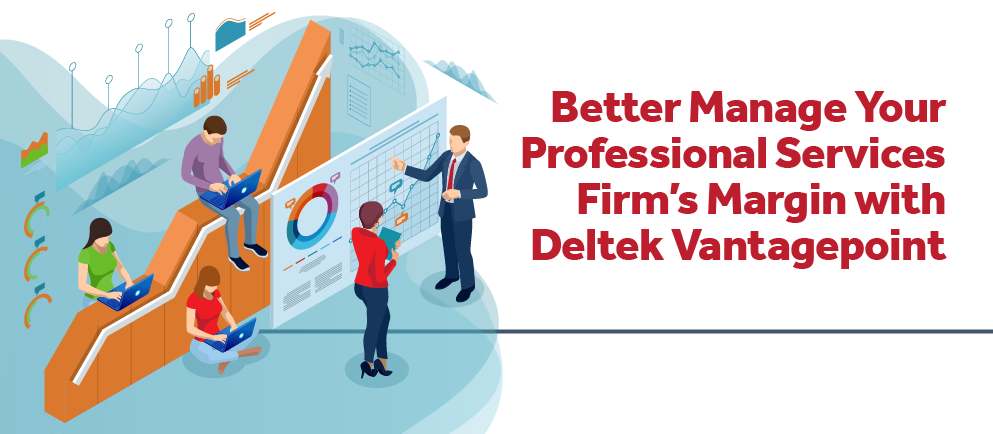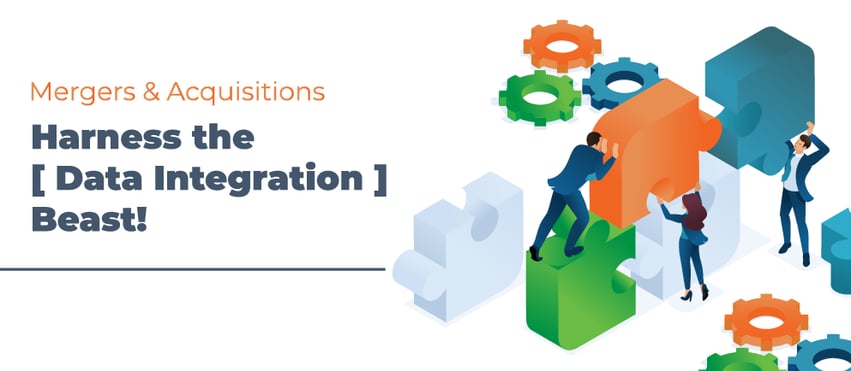5 Ways Deltek Vantagepoint Simplifies Billing, Time, Expense, and Transaction Entries

Deltek Vantagepoint continues to deliver in process efficiencies. As the most-used ERP by project-based firms, Vantagepoint is in touch with the struggles faced by its users and offers solutions to those pain points. Here are some ways that Vantagepoint can be leveraged to streamline your firm’s processes.
1. Time Entry Made Easier with Flexibility and Automation
Time entry, while critical to project cost tracking, is many employees’ least favorite task. Vantagepoint time entry provides a user-friendly experience with options to complete timesheets through the main application in the timesheet and/or calendar view, as well as a mobile app that is optimized for use on mobile devices. The calendar view timesheet can be made even more helpful by enabling the Connect functionality (more details later!).

A user can start, work on, and finish their timesheet entry using all 3 options that work together. Timesheet assist is a tool that can help employees remember to submit their timesheet by providing a reminder and suggested projects.
Vantagepoint also offers robust options for an approval process that can range from one approval for the entire timesheet to an approval for each line item. While line-item approval may sound daunting, it can serve to speed up the billing process! Since the time has already been reviewed before draft invoices are even created, Project Managers should be able to simply skim the time charges on their drafts and approve invoices more quickly.
2. Snap, Submit, and Get Paid Faster with Smarter Expense Entry
Employees on the go know they need to submit their expense reports in a timely manner to get paid and bill the clients. Expense reports can be done in the main application, but this is one place where the mobile app really shines. Turn on the Intelligent Character Recognition (ICR) feature (located in the main application) for your users.
This will allow them to take a picture of their receipt to start the line-item entry for them! The system will do its best to read the receipt and fill in data. Less keying for the employees = quicker turn around on expense reporting, and the added bonus is that the receipt is already attached! Follow that up with a thorough approval process and paying your employees and billing your clients, including attaching backup receipts, will be much more efficient.
3. Eliminate Paper Chasing with Streamlined AP Invoice Approvals
Managing Accounts Payable invoices can also be automated using Vantagepoint. Using the AP Invoice Approvals feature can help eliminate paper shuffling and lost email approvals. And with the ICR functionality enabled, the system will start the data entry for you.

An approval workflow will assist with routing the invoices to the appropriate parties for approval. The list of AP invoice approvals in process available in Vantagepoint makes follow-ups simple. Approved invoices flow to the client billing process and can also be included with the client invoice with one click in Billing Terms. Complete the AP process with electronic payments, an auto-created file for your bank, and emailed remittances using email templates. AP hassles are a thing of the past!
4. Accelerate Billing and Cash Flow with AR Invoice Tools
Cash is still king. Regular client billing keeps cash flowing! The AR Invoice Approval process enables the generation of draft invoices inside of Vantagepoint, with the option to use the markups feature. With the markups option enabled, Project Managers can not only review client invoices, but also make notes and indicate changes directly on the draft that is within Vantagepoint.

Billers can access a list of invoices that have been generated, including the approval status, which combats lost emails and missed invoices. Completed invoices can be emailed to clients, and using email templates to do so will streamline the process even more.
5. Automate Contact + Opportunity Entries with ICR, Connect, and Deltek DelaTM
Work smarter, not harder when it comes to adding contact information to Vantagepoint. Enable ICR for the mobile CRM app. This feature will allow users to snap a photo of a business card with their mobile device and put the power of automation into creating a new contact record. Review and adjust the information as needed and move on to tasks that add more value to your day.
Enable Vantagepoint Connect and leverage it to help automate client, contact, opportunity, and activity record creation. Employees spend a lot of time in the company’s email application like Outlook and Gmail. Using Connect can help get that information out of the email silo and into the ERP that can provide visibility to the data across users. Get the data in front of the correct staff in a timely manner and reduce the number of missed opportunities!
Use Deltek Dela! While Dela is the AI power behind approval workflows and ICR, it can also assist Hub navigation, finding data, and the creation of Activity records. More information on Dela is available in this blog and in this mini-demo.
Let’s Keep the Efficiency Wins Coming
Thanks for sticking with me through this roundup of my favorite ways Vantagepoint can simplify your day-to-day. If you’re ready to take it a step further, I’ve got something just for you—my on-demand webinar, “15 Must-Know Features to Supercharge Your Deltek Vantagepoint Efficiency.”
In it, I dive into even more time-saving tips and show you some of the latest features in Vantagepoint 7 and beyond. From smarter navigation to accounting shortcuts to automating those repetitive tasks—we’ll cover it all.
👉 Click below to watch the webinar when it works for you, and let’s keep making your Vantagepoint experience as efficient as possible!









 If you’ve been using Deltek Vantagepoint but haven’t kept up with the latest versions, you might be missing out on some game-changing features. Versions 7.0, 7.1, and 7.2 are packed with updates that make navigating, managing, and automating your work easier than ever. From smarter navigation to advanced AI tools, these updates are designed to save you time and streamline your processes. Let’s dive into the highlights to see what you might have overlooked!
If you’ve been using Deltek Vantagepoint but haven’t kept up with the latest versions, you might be missing out on some game-changing features. Versions 7.0, 7.1, and 7.2 are packed with updates that make navigating, managing, and automating your work easier than ever. From smarter navigation to advanced AI tools, these updates are designed to save you time and streamline your processes. Let’s dive into the highlights to see what you might have overlooked!












